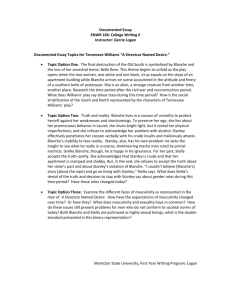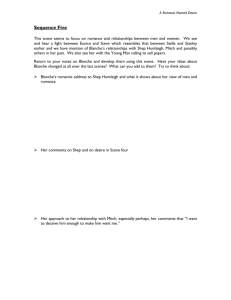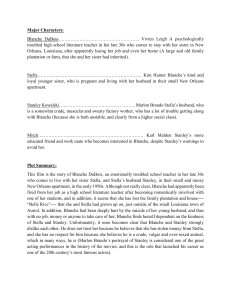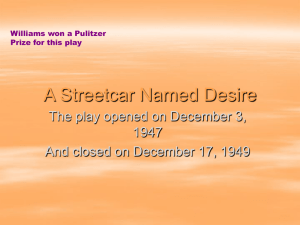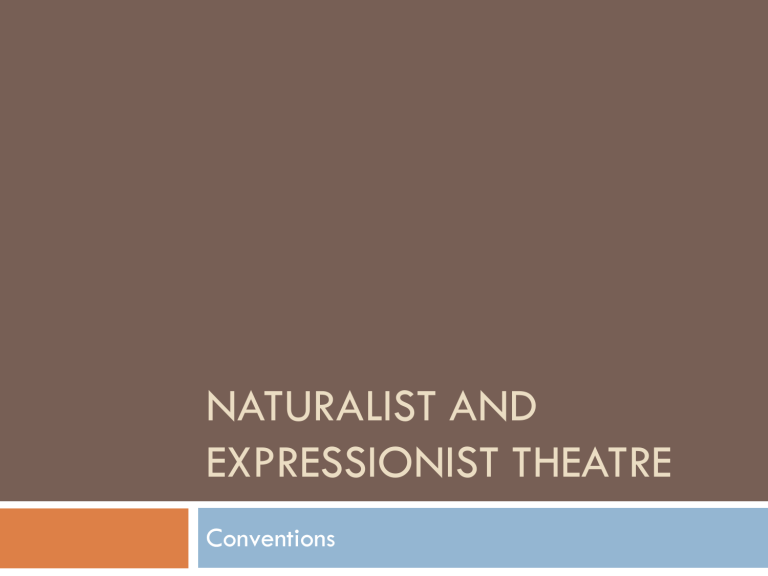
NATURALIST AND EXPRESSIONIST THEATRE Conventions Here are some conventions of naturalist/realist drama Plays should be a realistic as possible, creating an illusion of real life on stage Believable, everyday working/middle classed characters Set, props and costumes are realistic and believable Action is continuous – no jumps in time No interaction between audience and actors Dialogue is close to everyday speech Acting looks like real life Edward Munch’s Scream 1893 (the very start of expressionism) Expressionist drama Expressing is more important than being realistic Expressionistic devices are used to make the psychological state of the characters clear to the audience Shadowy, unrealistic lighting and visual distortion in the set Abstract sets represent themes through shapes, colours and simplified images Only a few symbolic props Episodic Heightened lyrical poetic style Long monologues, pauses/silences instead of naturalistic dialogue Stylised exaggerated movements rather than naturalistic ones. Williams: mixing realism and expressionism Some aspects of the play seem ‘real’, like a grubby kitchen set The playwright might choose to use very nonnaturalistic theatrical devices to convey a different sort of reality (lighting, music, staging, language) Elia Kazan (director) said: “This is a poetic tragedy, not a realistic one. The acting must be styled...Blanche’s inner life, emotions are a tangible actual factor’ The Glass Menagerie Rank these events scene 1: 1.A glimpse of life in the area – a sailor on his way to the Four Deuces, a black woman and a white woman chatting together, a streetseller. 2. Stanley throws a package of meat at Stella his wife, who hurries after him 3. Blanche arrives having taken the streetcar from Desire to Cemeteries – she seems lost and disorientated and shocked at what she sees. 4. Eunice lets her into the flat and talks to Blanche about her family’s plantation home – Belle Reve – in Mississippi. 5. Having sent Eunice off, Blanche helps herself to a drink while she waits for Stella – and then washes the glass. 6. Stella arrives. 7. The sisters talk about Blanche’s visit. 8. Blanche tells Stella why she isn’t still teaching school. 9. Stella talks about Stanley, the sort of man he is and their relationship. 10. Blanche tells Stella that she has ‘lost’ Belle Reve, their family home. 11. Stanley arrives back and introduces himself to Blanche. 12. He asks Blanche about her marriage and the scene ends with Blanche
